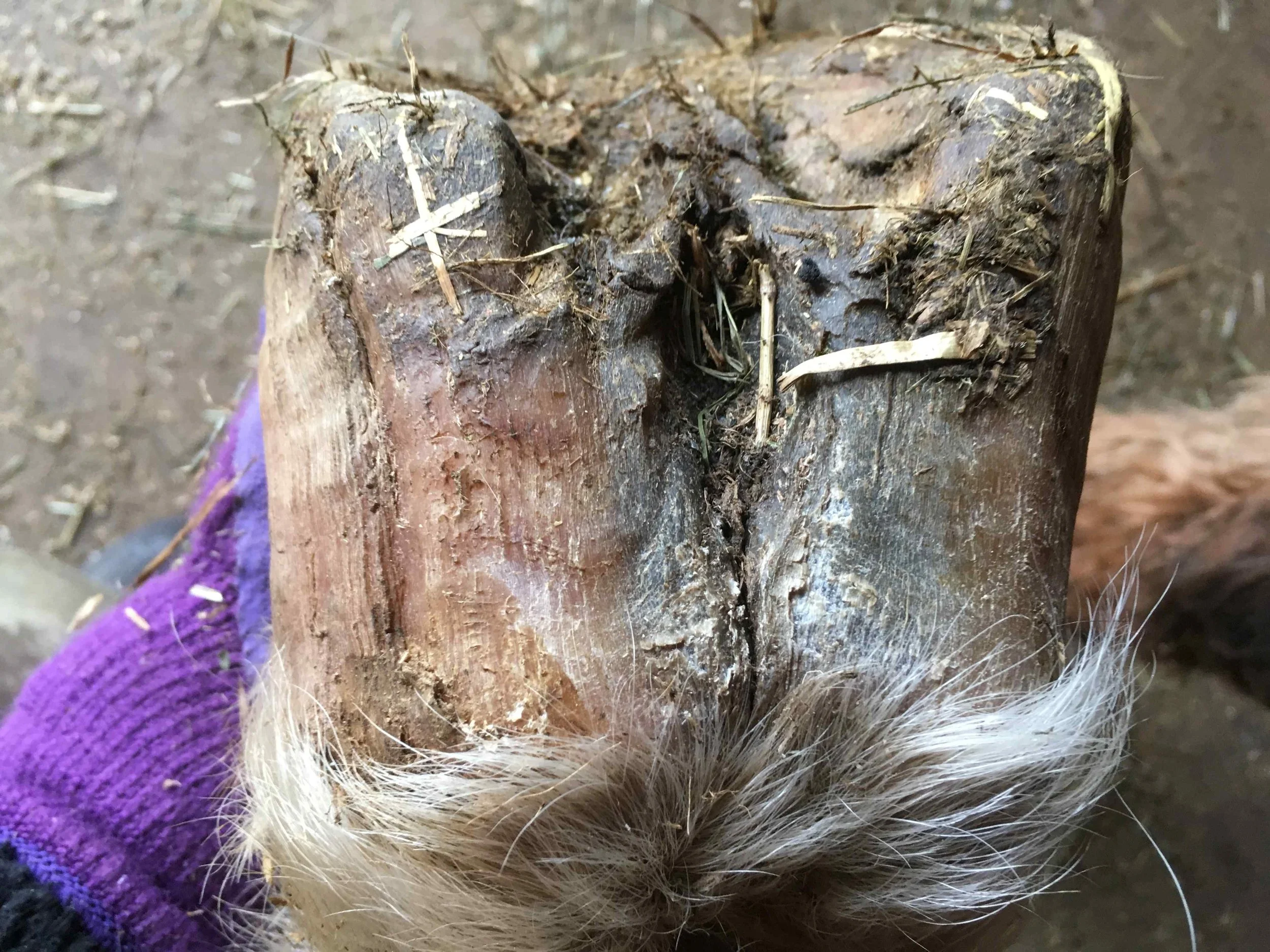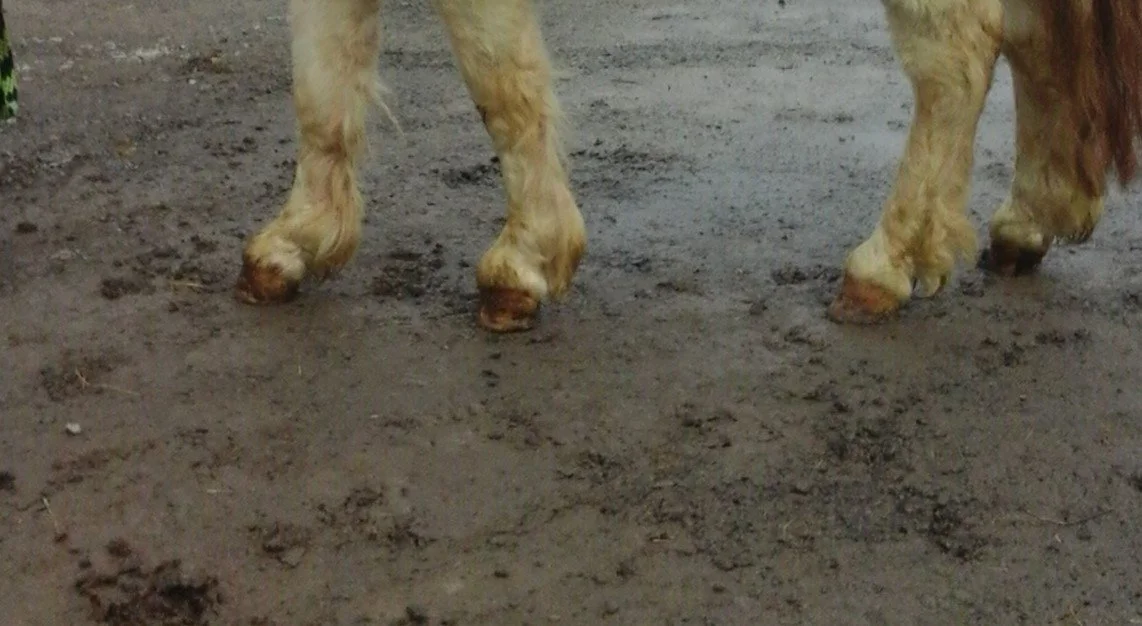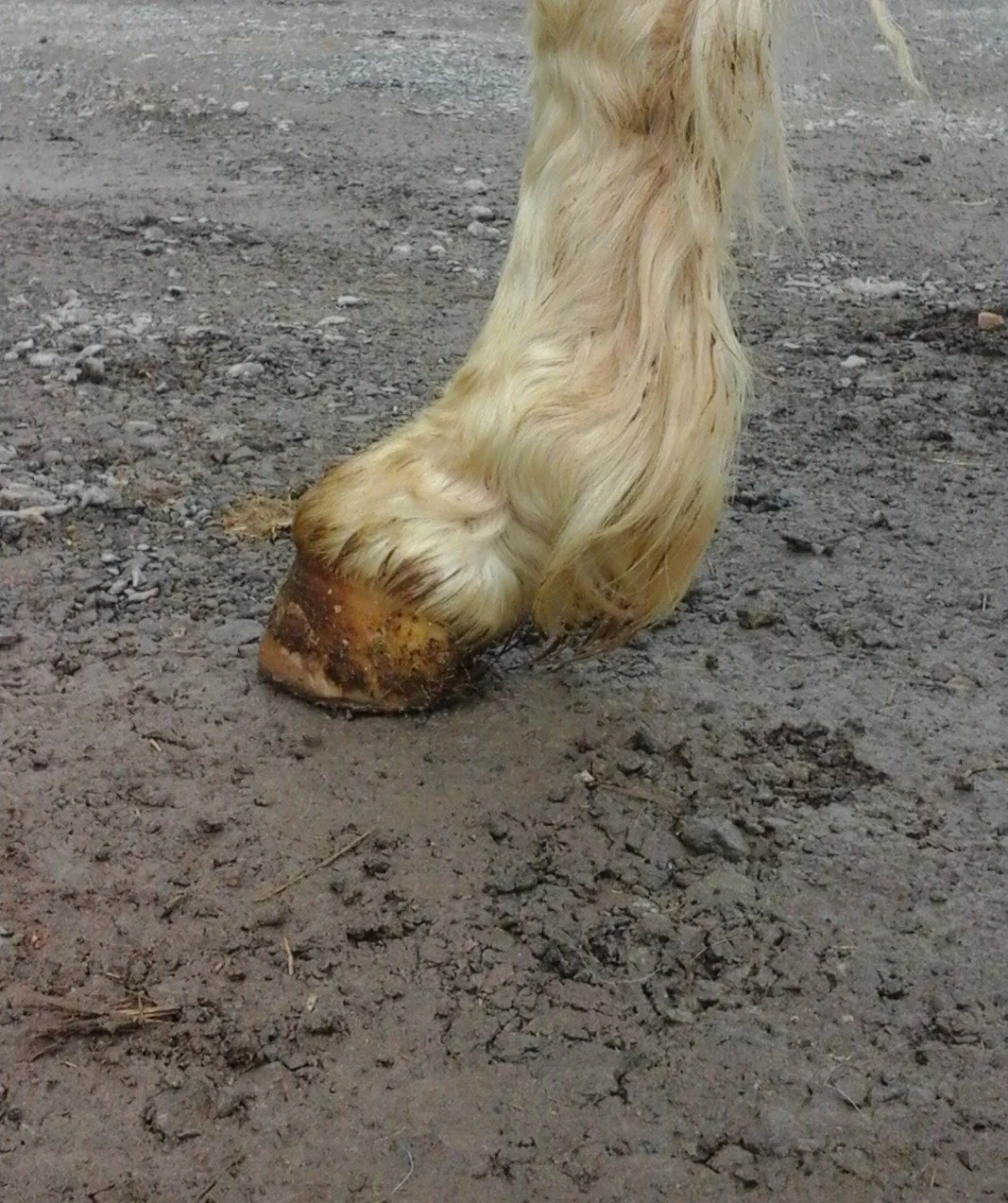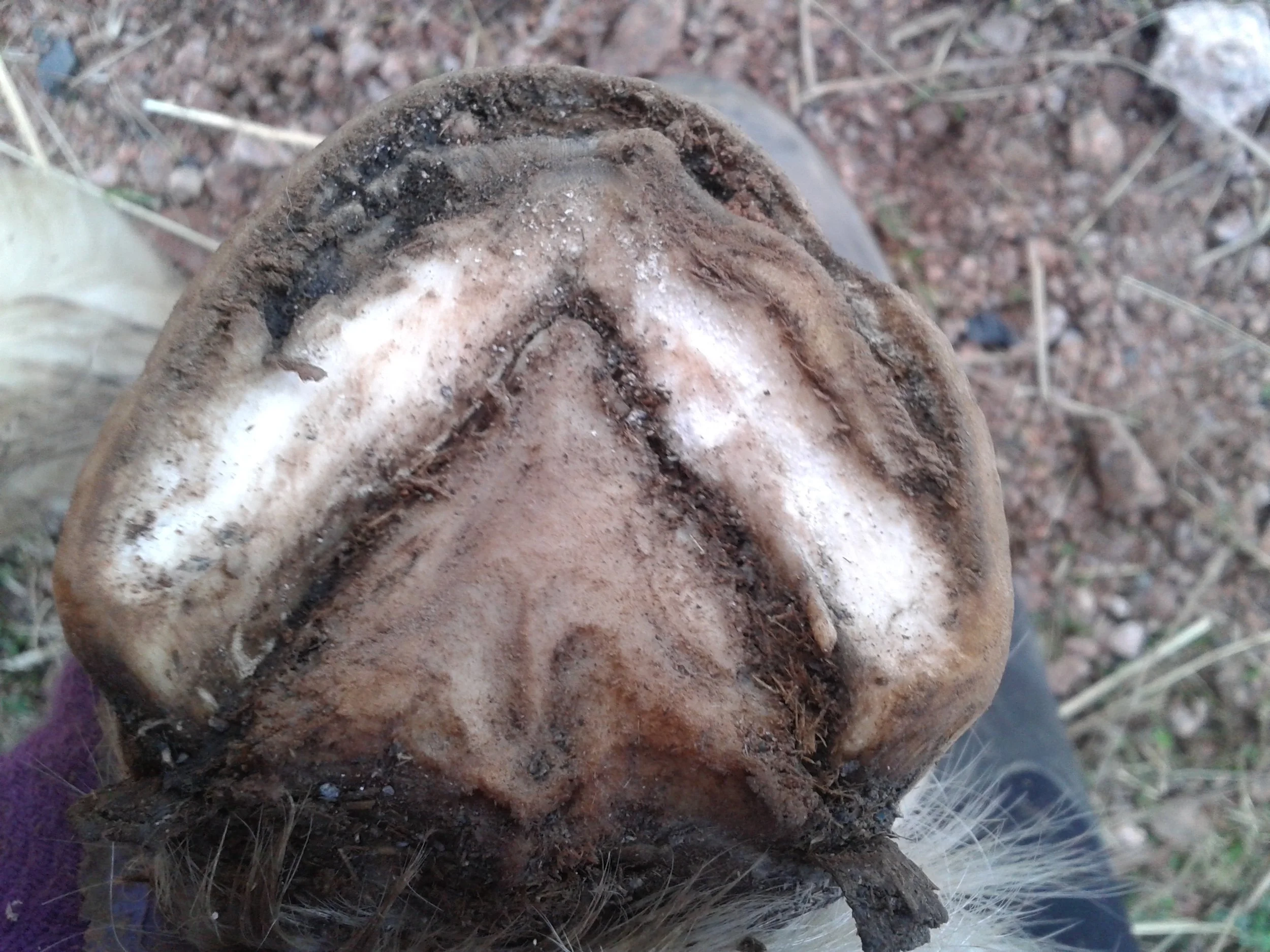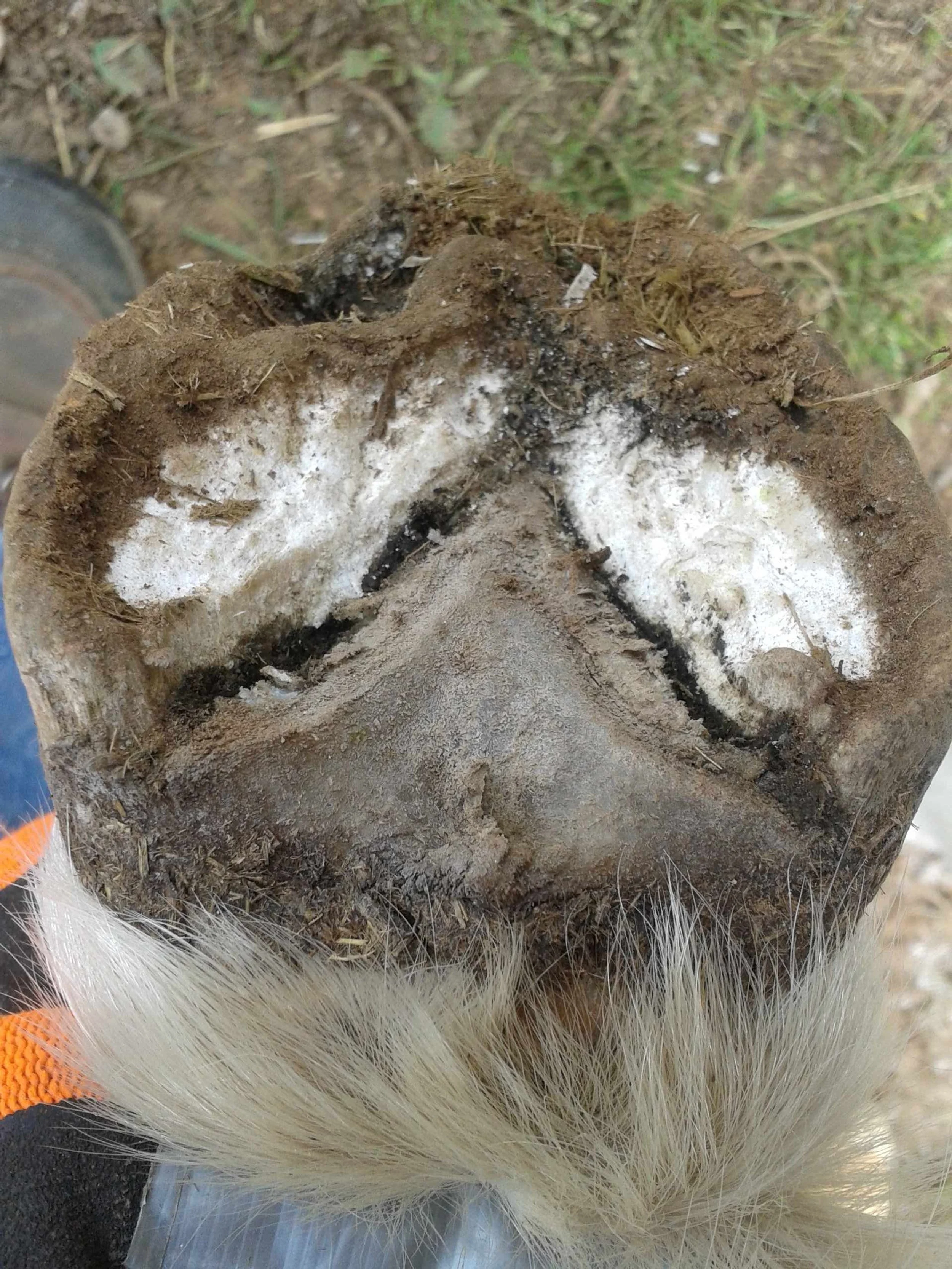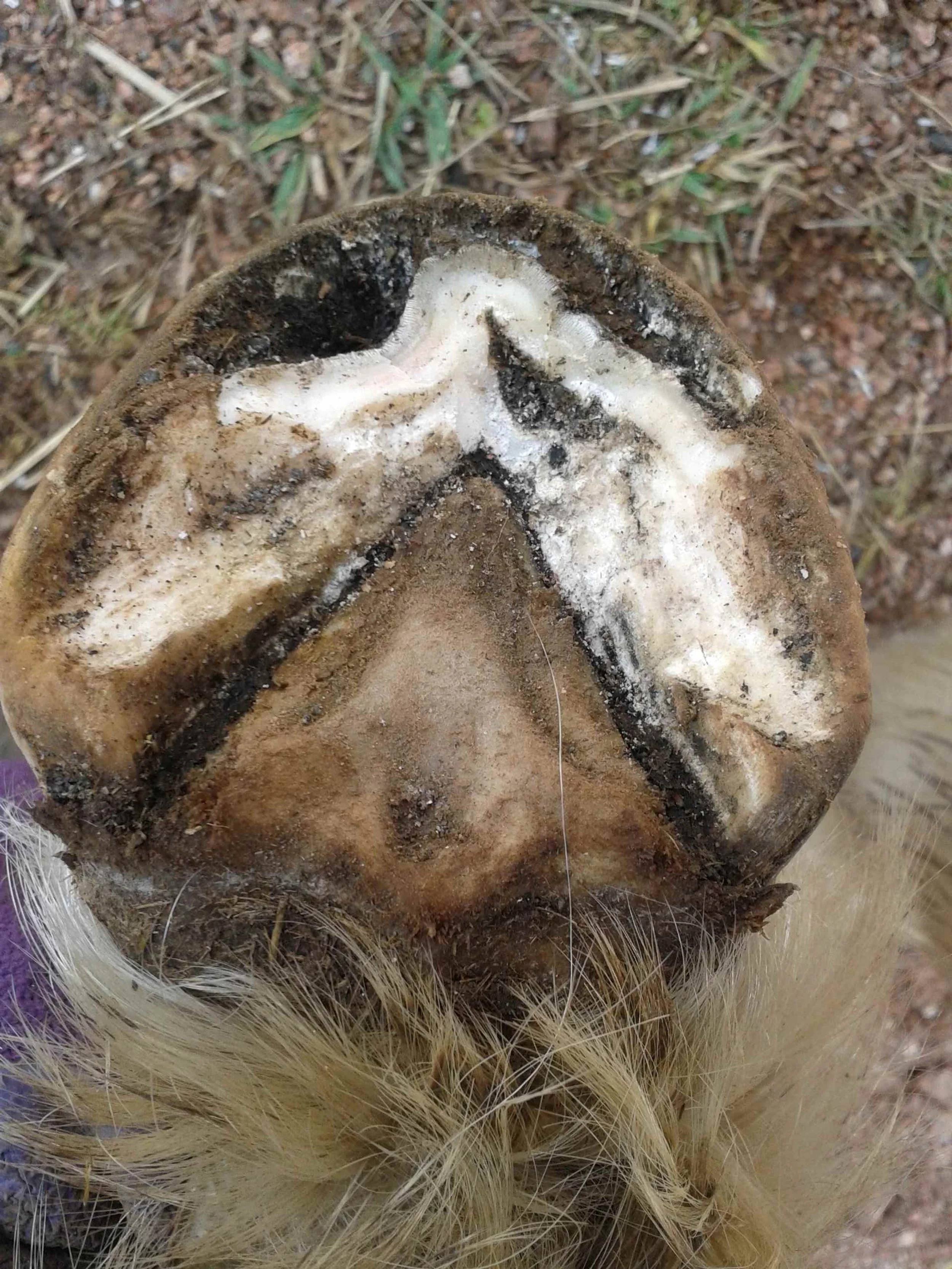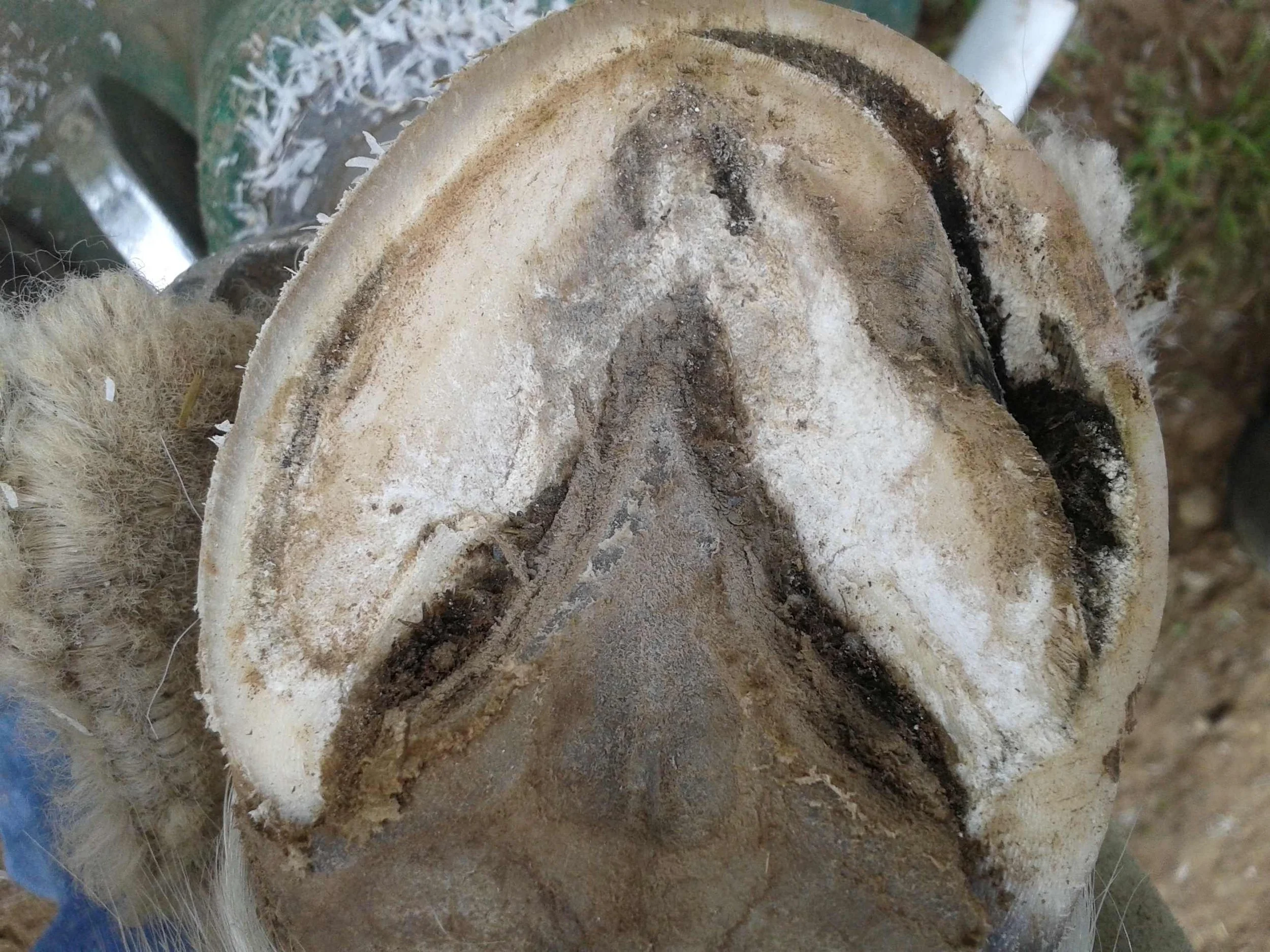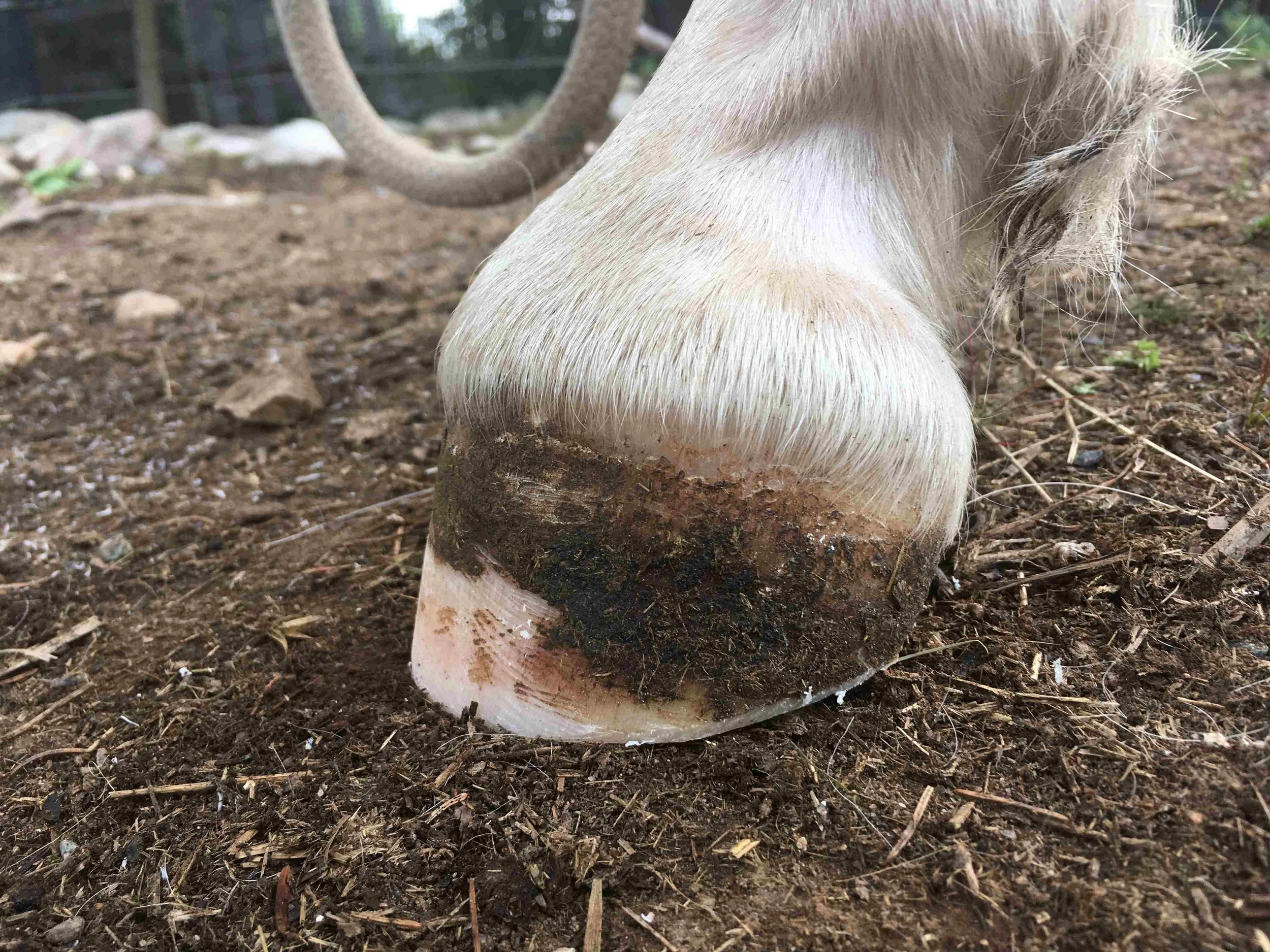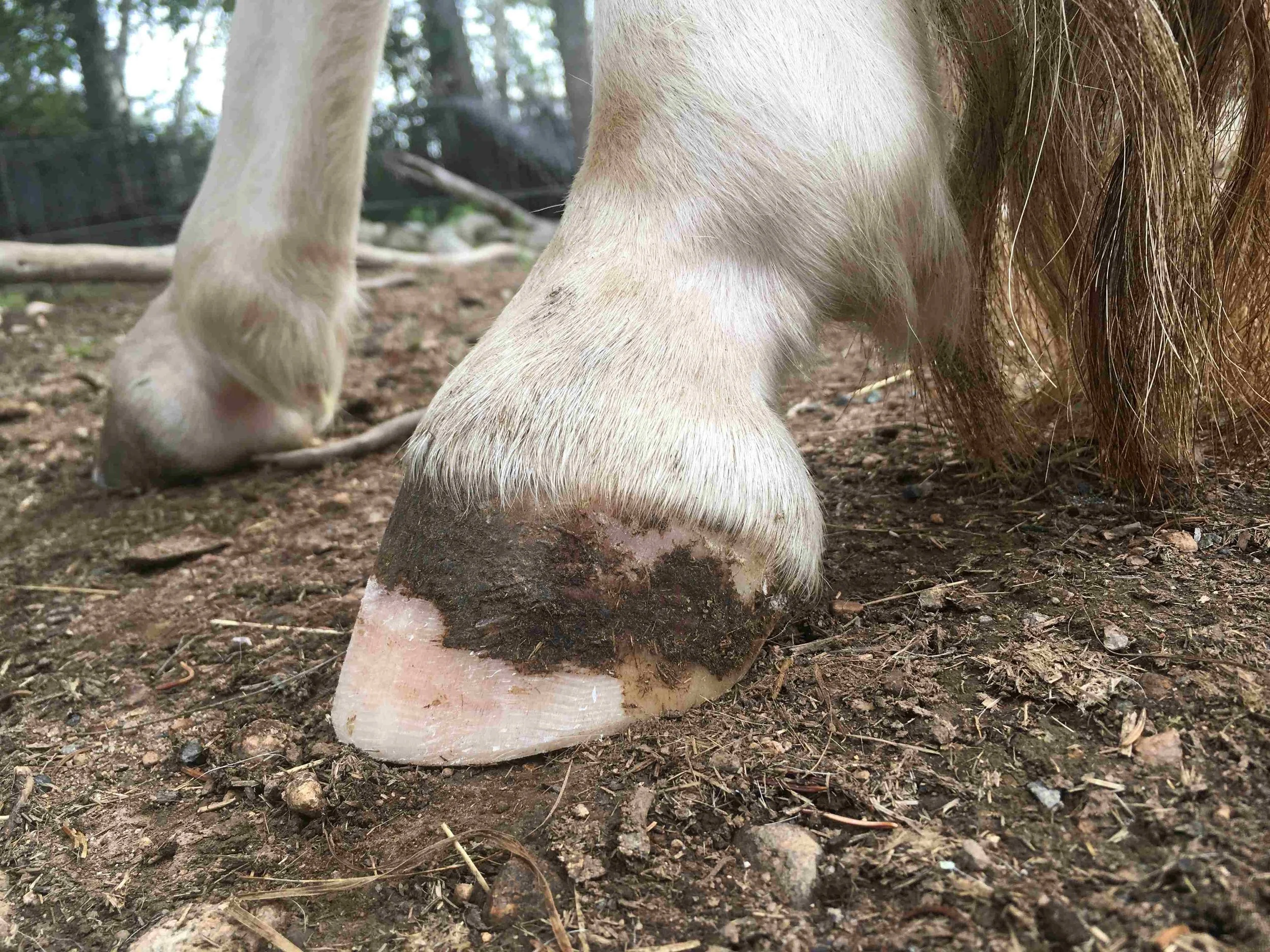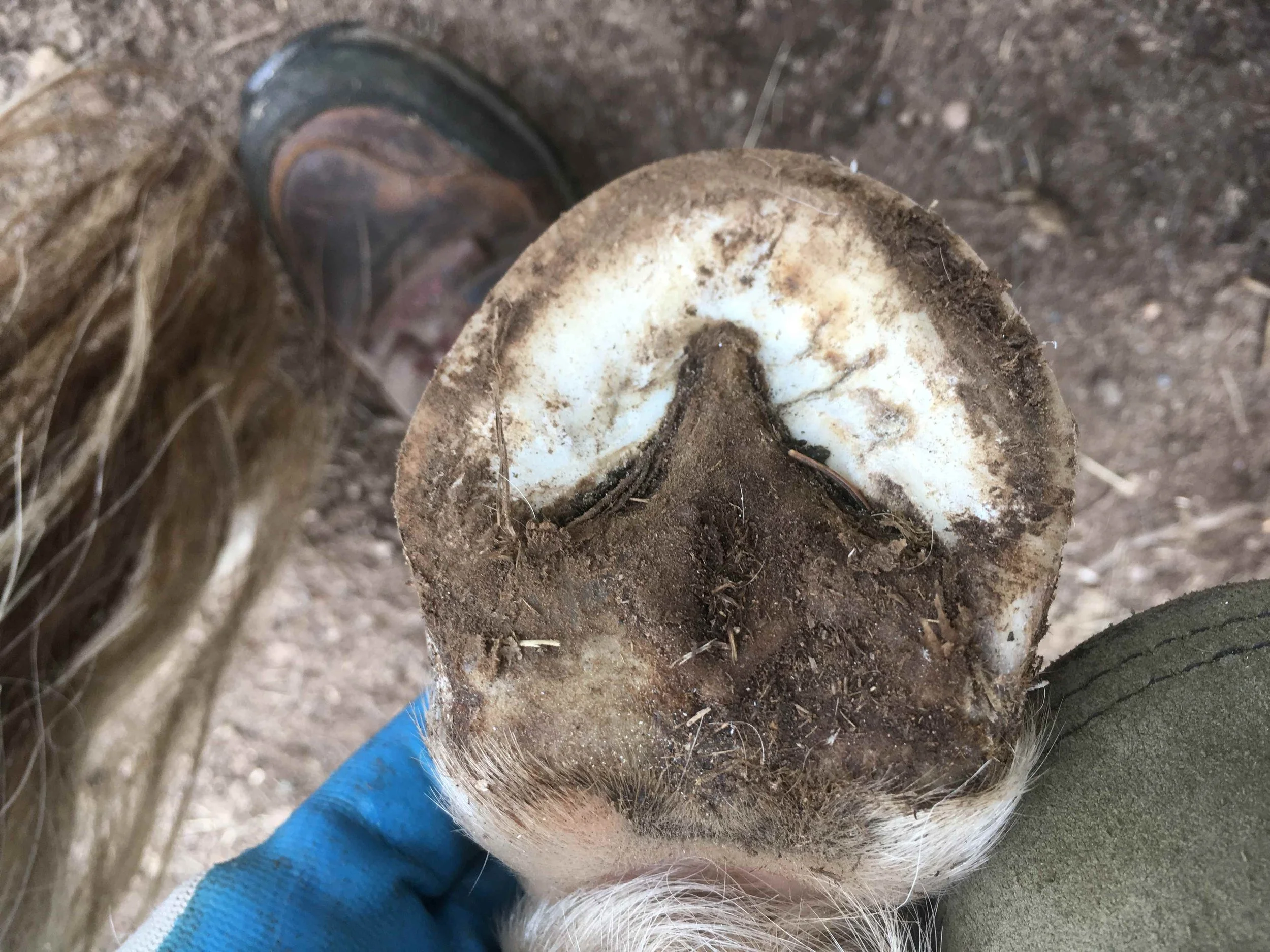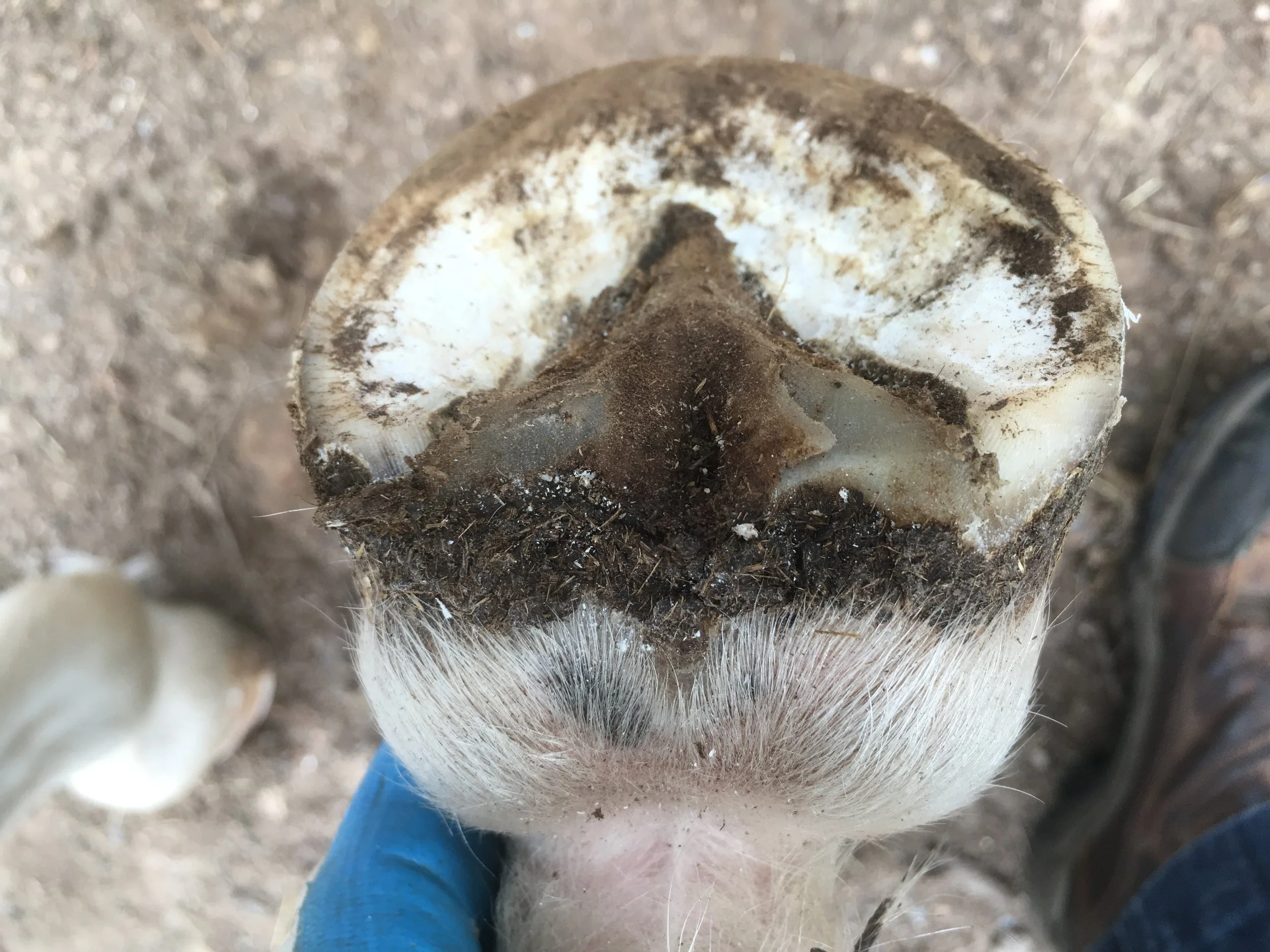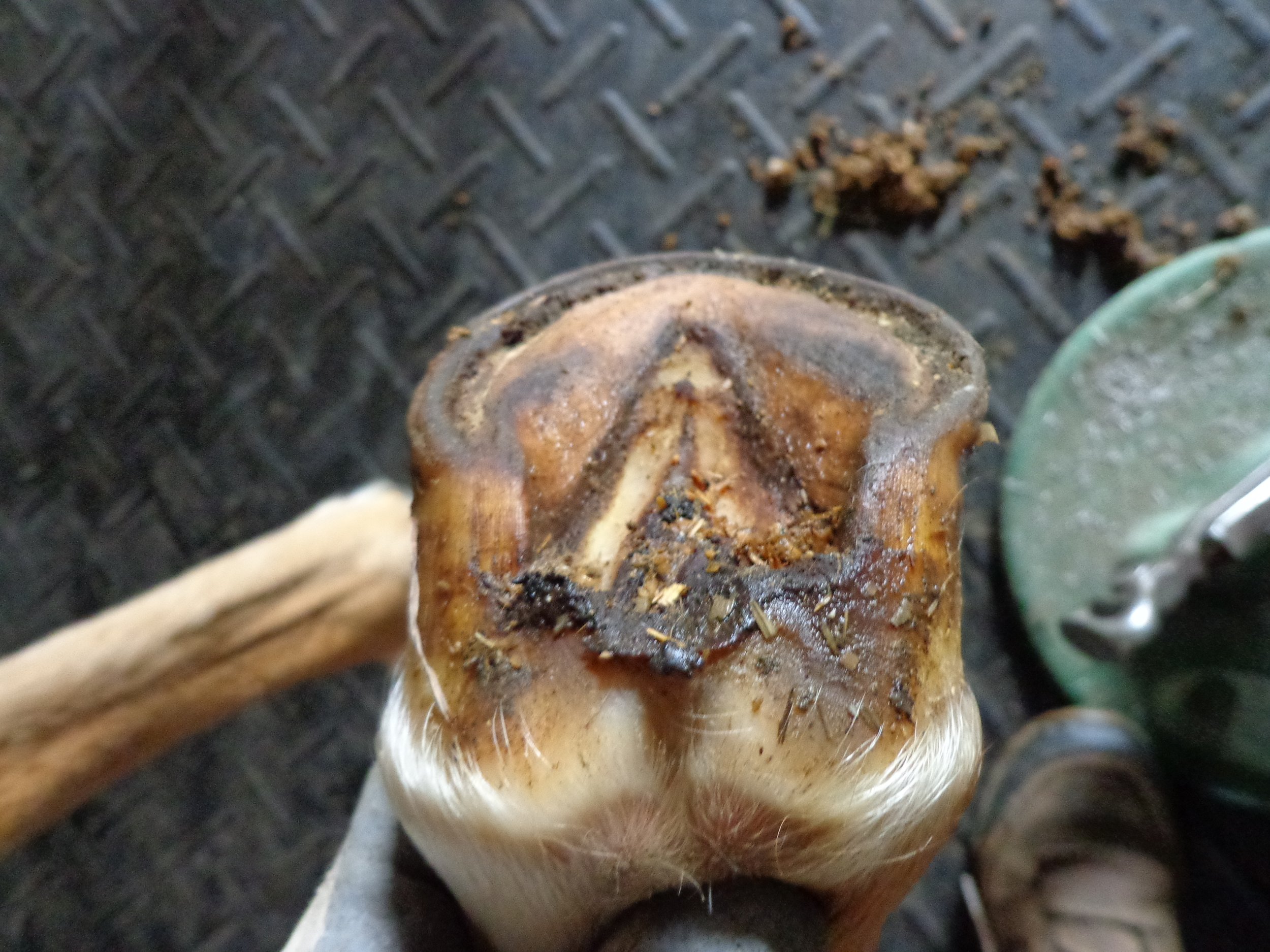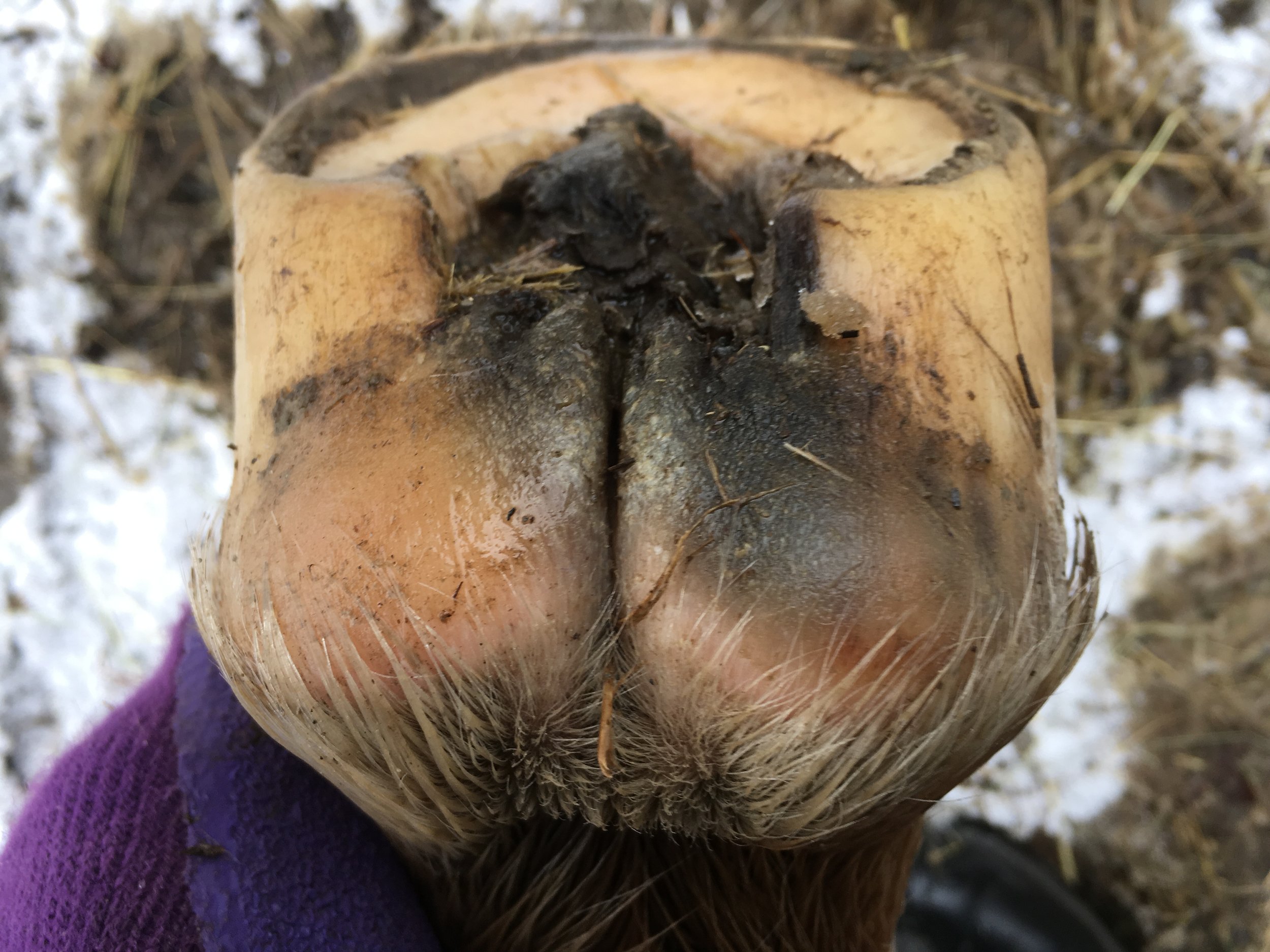Hoof, Body & Soul, Part III: Mission Impossible, unedited, by Gudrun Buchhofer. Blog 20, case #20
Author: Gudrun Buchhofer
Dedicated to all the horses suffering because of an unfinished foundation — their hooves.
What did all my client horses over the last 20+ years have in common? They needed to heal from atrophy of the back of the foot as well as other atrophied hoof structures.
CHAPTER 1
Atrophy, the fundamental cause for most all hoof pathology and upper body injuries
Club foot; upright foot; high-low syndrome -- the direct connection to the unfinished foal hoof and atrophy of the back of the foot
A club foot is based on an enforced decision at foal age (Part I: Freedom from Pain, Hoof, Body & Soul, 89). Due to exposure to unnatural grounds (bedding, shavings, rubber mat, pasture) and lack of movement after birth the foal is not able to wear down a significant amount of the hoof capsule, activate true heels and eventually release the false heels. Instead, the foal is using the toe of one hoof (high-low syndrome) or the toes of several hooves (club feet) as a crutch for support. The same scenario occurs where a foal is born in said unnatural circumstances and the trimmer wrongfully rolls a foal’s toe rather than shortening the hoof capsule from underneath (without applying a genuine mustang roll and without helping the back of the foot to finalize). A turning point into pathology.
I allow every club foot (or upright foot) to grow back the previously injured toe. Simultaneously, I help heal the back of the foot being stuck with those long shanks (false heels) since birth. With every trim I activate the heel corium. After removing any flared tips of the false heels I cut the mustang roll all the way around (reminder: a genuine mustang roll has very precise guidelines). Then I gently mimic wear at the back of the shanks as well as between heel and frog (like using dental floss between two teeth). I always imagine how a foot gets worked in a natural environment. Everything is rounded. Nothing is sharp or pointy. Rasping the heel flat, not mustang roll it and not using the fine side of the rasp or sand paper everywhere around and in between, will not activate the heel corium properly. (I like to use rasps that are more dull than sharp.)
Over time, the hoof gives the false heels as well as hoof height. Every six weeks the hoof allows me to take off about 1/8 inch from the false heels. Later down the road the entire foot gives height. This is easy to make out by the amount of wall the hoof releases six weeks after my last trim. The hoof is giving rather than growing aimlessly. There is no more growth in the pathological direction. The heels of any club foot I trimmed came down little by little -- trim by trim.
After this part of the healing process is completed (allowing the false heels to come down and the originally long toe to grow back) the hoof is able to restore the back of the foot with true heels. Eventually, the back of the hoof will catch up with the variant capsule angle-of-growth (a process that should have happened right after birth). The originally long foal hoof is finally released. True natural hoof size and proportions, healthy frogs, bulbs, internal structures and a naturally appearing arch in the quarters are the end result.
Each club footed horse and each horse with a high-low syndrome I worked on revealed and confirmed the same fundamental problem: the unfinished fetal hoof with the long shanks as false heels. Colour stripes in newborn fetal hooves I looked at helped me to support my findings. They show the wall’s growth direction. The foundation of the variant capsule angle-of-growth is set at birth awaiting completion post birth. The conventional concept of straight or upright heels with a certain heel height fails. Colour stripes in newborn fetal hooves also support my finding that there is a dead corner in the back of the foot. It probably is needed for a safe birthing process but to be worn down after birth in order to meet up with the variant capsule angle-of-growth (image 1.14, Part I: Freedom from Pain, Hoof, Body & Soul, 28). True heels need to be unlocked right after birth. They need to grow in from further back to complete the variant capsule angle-of-growth and to place the hoof under the bone column. From my field studies on newborn foals in fairly natural (simulated) environments we know the false heels including the dead corners are worn, pushed away and finally released from the body within the first months of a foal’s life.
The image from Zilker’s right front hoof shows the dead corner he was stuck with. He was never able to unlock true heels and finalize the variant capsule angle-of-growth. The back of the foot was held off the ground for about thirty years of his life.
My experience with high-low syndrome (one front hoof has a steep toe angle and one front foot has a low toe angle) is different from working with two club feet. I find the healing time a lot longer. In a scenario with two club feet the heels give a few millimeters every trim as the hoof is building internal structures and working on complementing the variant capsule angle-of-growth in the back. In a case with a high-low syndrome the low angled front hoof (as well as both hind hooves) first have to build the back of the hoof and internal structures in order to support the coffin bone in the back. Steeper angles and shorter toes are a result of the healing process. Eventually the club foot is released from serving as a crutch and over time the two opposites (the club foot and the low front foot) approach each other. The high hoof lowers and the low hooves (usually one front and the two hinds in a high-low syndrome) steepen in angles.
Always all four hooves as well as the body need to heal from the fundamental issue: the unfinished back of the foot. We cannot isolate a "syndrome", chop down a club foot and ignore the rest.
Case # 20
This two-year-old miniature horse used to cling to his toes because the back of his hooves was atrophied. There were injuries to the white line and trauma to the toes. There were actual blood pockets in both fronts!!!
Pre-trim first visit
Left front pre-trim first visit
Left hind pre-trim first visit
Left front
Right front
Right front
Right front
Left hind
After birth, he did not have a chance to wear down those long “false” heels. Slowly, as I helped him to activate the back of his hooves, the “false” heels came down. Trim by trim I was given about three millimeters of height. The injuries to the toes and the white line healed.
Over the course of two and a half years the hooves shifted further under the bone column (one divergent hoof at a time). True heels grew in from further back and complemented the variant capsule angle-of-growth.
The conformation of the pony improved. I just wished I had more time to work on this case.
Left front
Left hind
Left hind
Left front
Right front
Two and a half years later
photos: Gudrun Buchhofer
Stay tuned for the upcoming cases (under my care for up to 20 years) in this blog series as a replacement for the unpublished part III: Mission Impossible of my trilogy Hoof, Body & Soul.
What did all my client horses over the last 20+ years have in common? They needed to heal from atrophy of the back of the foot as well as other atrophied hoof structures.
Q: Why do we need to change the upbringing of our baby horses and donkeys? A: To prevent senseless suffering.
Gudrun Buchhofer

